Lake of the Woods Covered Bridge
Introduction
Text-to-speech Audio
Images
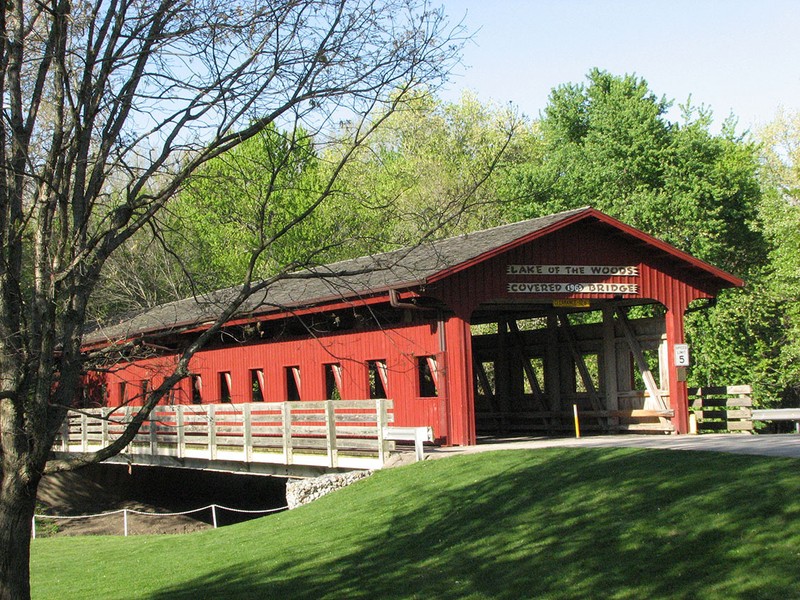
Under construction

Dedication of the Lake of the Woods Covered Bridge with HI Gelvin speaking.
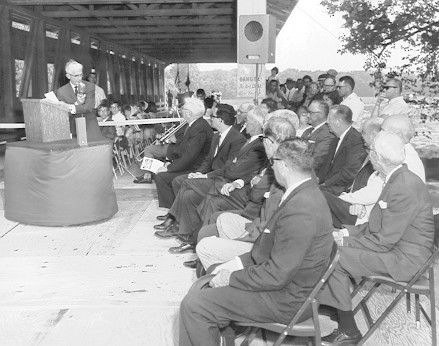
From the Sangamon River
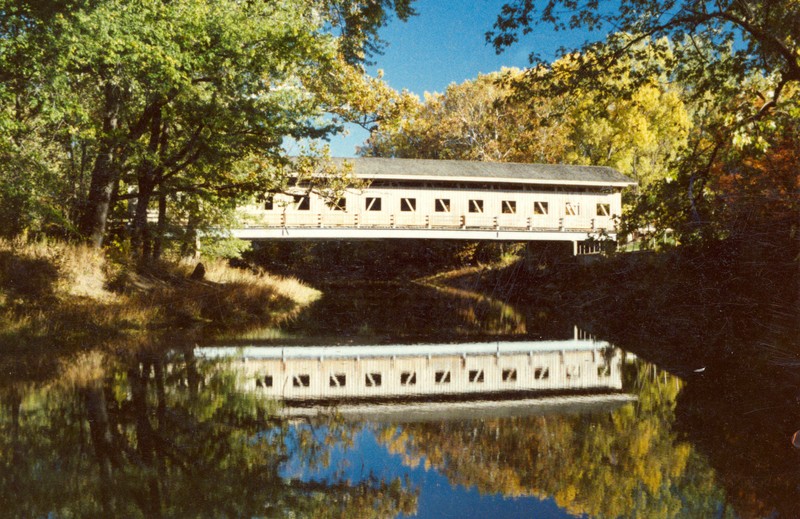

In the Snow
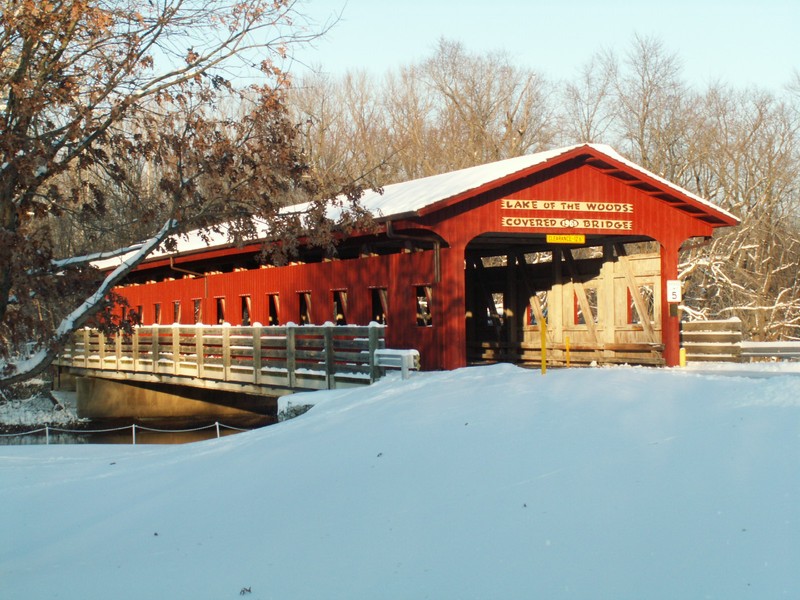
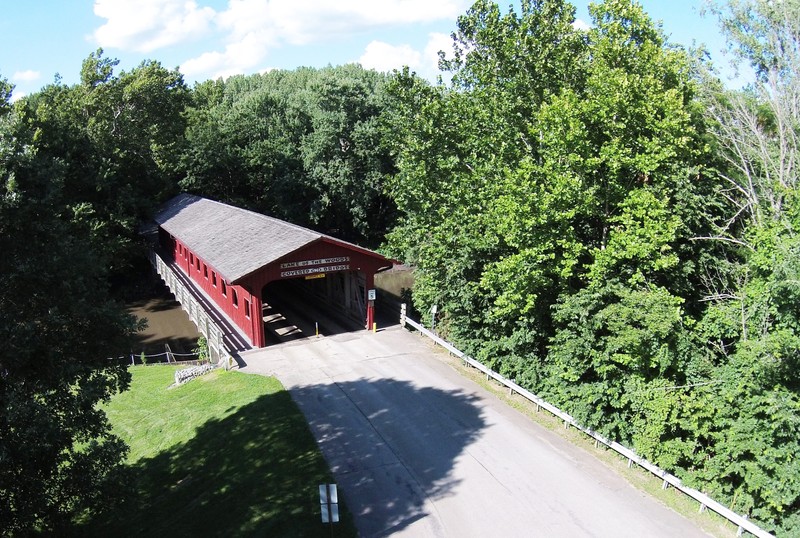
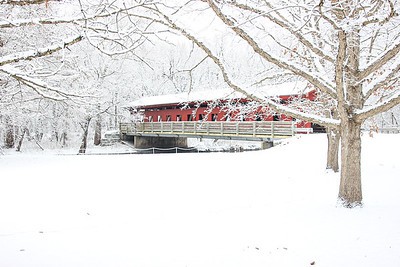
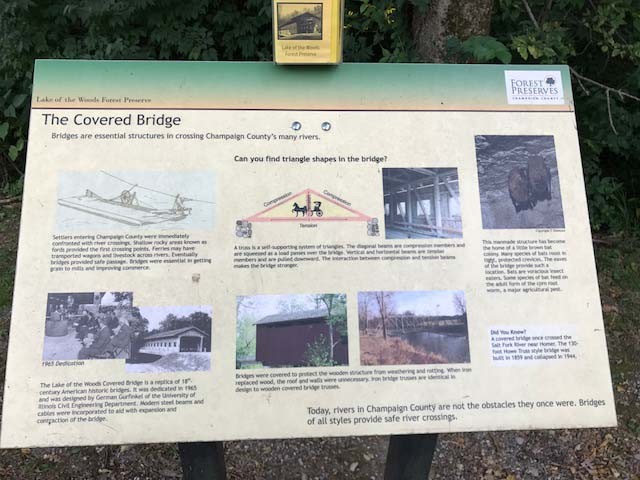
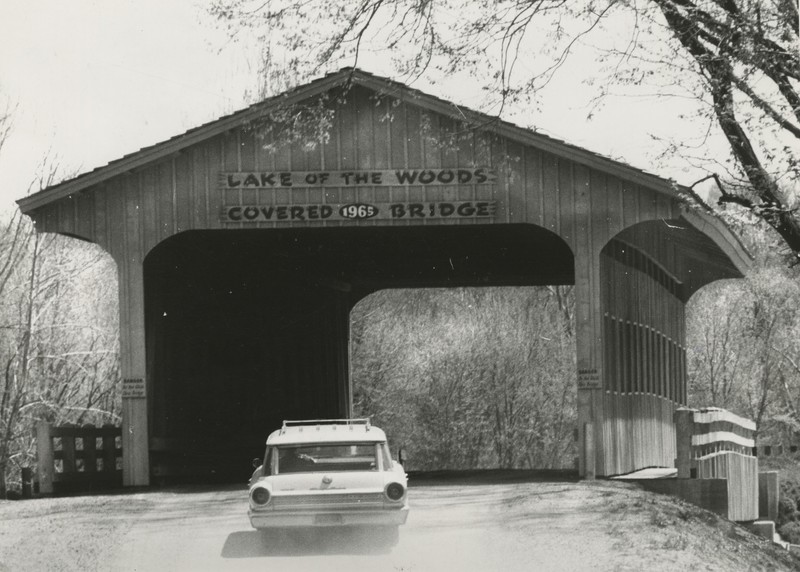
Backstory and Context
Text-to-speech Audio
Bridges are essential structures in crossing Champaign County’s many rivers. Settlers entering Champaign County were immediately confronted with river crossings. Shallow rocky areas known as fords provided the first crossing points. Ferries may have transported wagons and livestock across rivers. Eventually bridges provided safe passage. Bridges were essential in getting grains to mills and improving commerce.
Bridges were covered to protect the wooden structure from weathering and rotting. When iron replaced wood, the roof and walls were unnecessary. Iron bridge trusses are identical in design to wooden bridge trusses. A truss is a self-supporting system of triangles. The diagonal beams are depression members and are squeezed as a load passes over the bridge. Vertical and horizontal beams are tension members and are pulled downward. The interaction between tension and pressure beams makes the bridge stronger.
This manmade bridge has become the home of a little brown bat colony. Many species of bats roots in tight, protected crevices. The eaves of the bridge provide such a location. Bats are voracious insect eaters. Some species of bat feed on the adult form of the corn rootworm, a major agricultural pest.
Did you know? A covered bridge once crossed the Salt Fork River near Homer. The 130-foot Howe Truss style bridge was built in 1859 and collapsed in 1944. Today the rivers in Champaign County are not the obstacles they once were. Bridges of all styles provide safe river crossings.
Cite This Entry
Cain, Patrick and Pat Cain on behalf of Museum of the Grand Prairie. "Lake of the Woods Covered Bridge ." Clio: Your Guide to History. August 12, 2020. Accessed March 15, 2025. https://theclio.com/tour/1414/8/reverse

